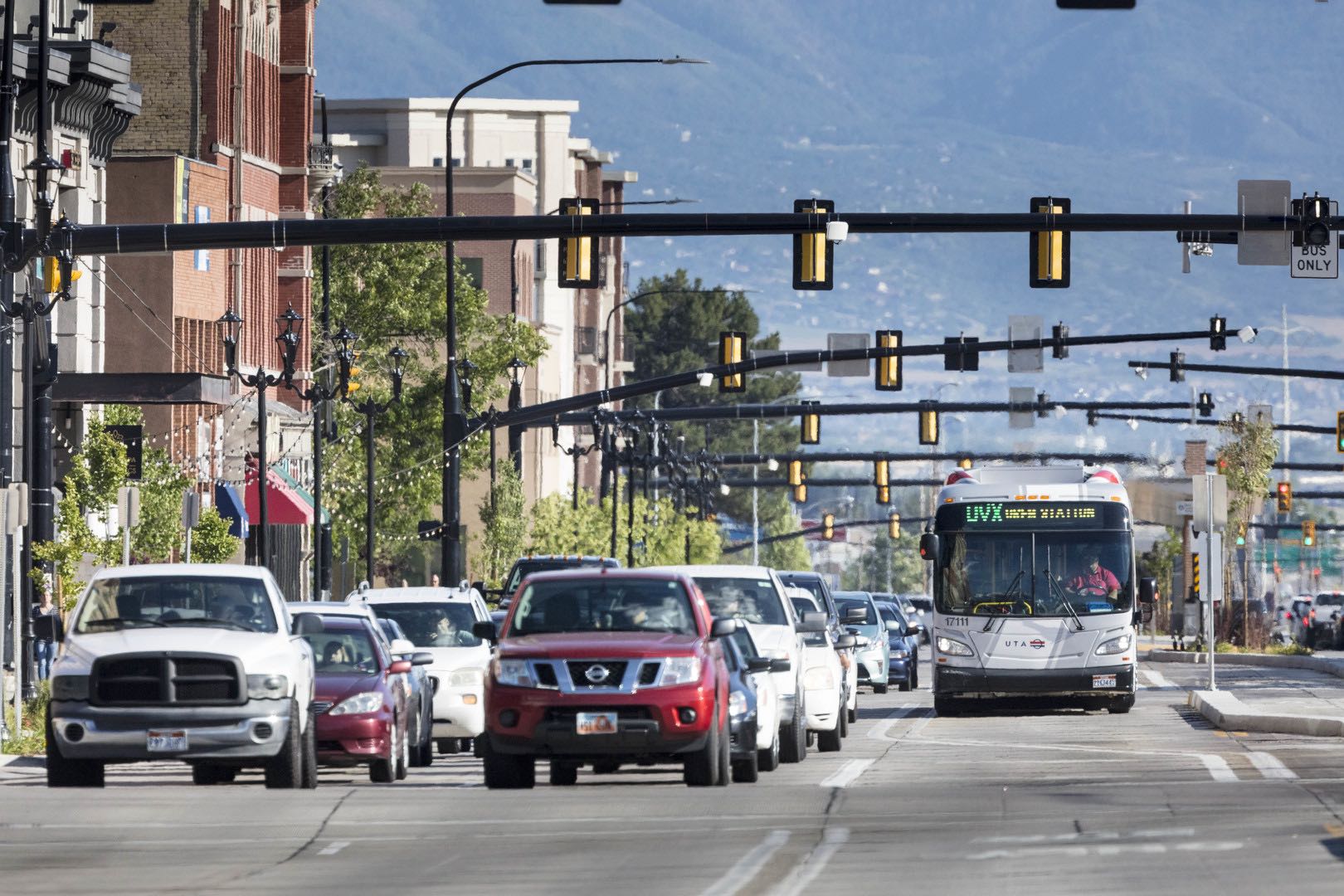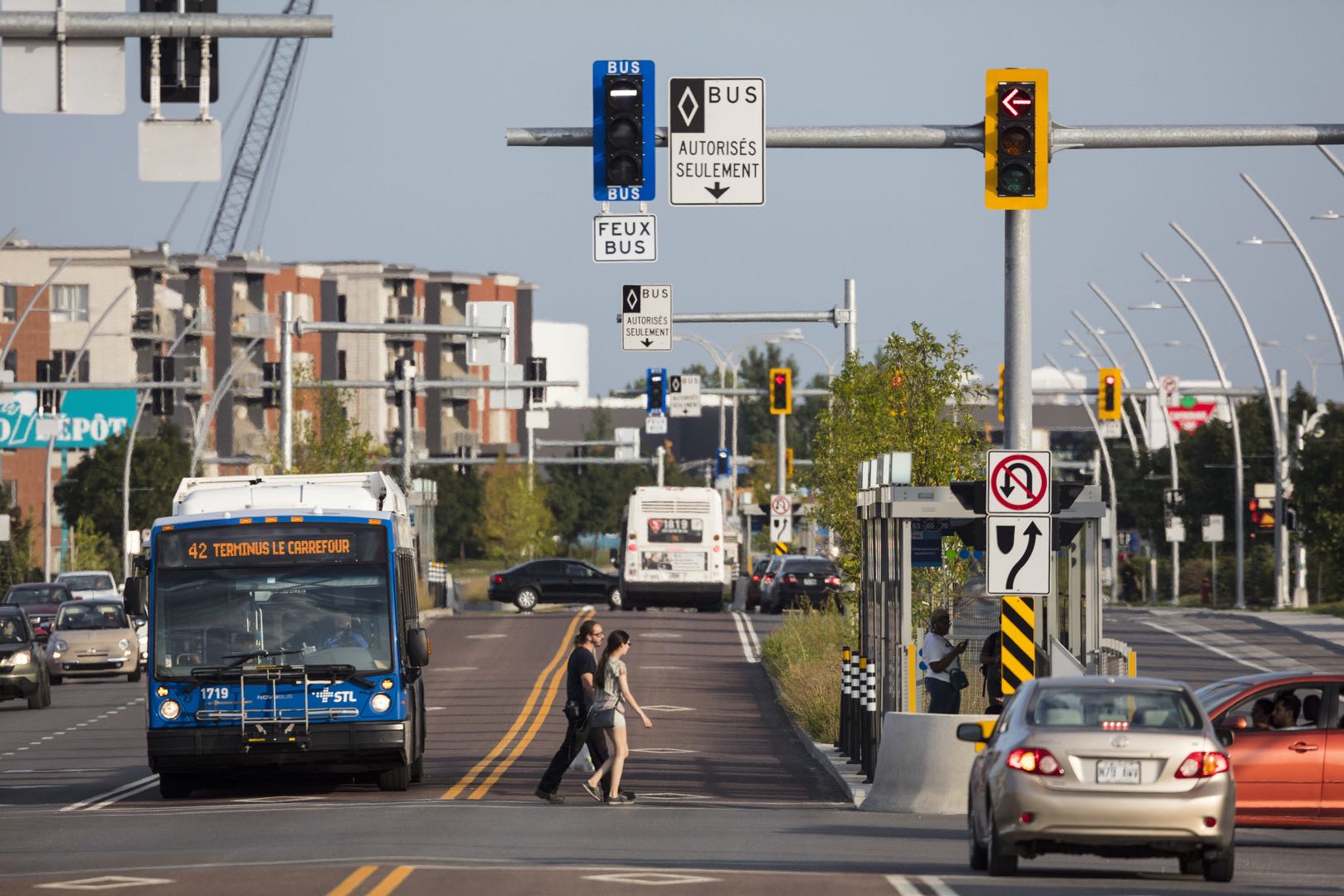
Dundas BRT
BRT provides an efficient rapid transit alternative at-grade system in several local areas (Mississauga Transitway, York Region’s VIVA) and across North America. Following are examples noted with features:
- Dedicated lanes for buses, where feasible, resulting in shorter travel times and more reliable transit service
- Frequent service with a bus every 5 minutes or less during peak hours
- Smart signals will adapt to support smoother traffic flow for all commutes – on buses, in personal vehicles, and on bicycles
- Better connections to TTC, Viva Rapid Transit, MiWay, Oakville Transit, Burlington Transit, Hamilton Street Rail (HSR), Hurontario Light Rail Transit (LRT) and GO Transit routes to allow for the use of dedicated lanes and shared stops, making it easier to travel through the region
- Reliable service with buses separated from general traffic in most areas, and greater stop spacing to allow for fast, efficient and reliable service
- Potential enhanced amenities such as service maps, next bus information, fare collection, garbage bins, wayfinding information and weather protection
Where dedicated lanes are not implemented, certain Transit Priority Measures (TPMs), including infrastructure and signal measures, can be considered to optimize conditions and contribute to shorter, more efficient rides. These include:
- Queue Jump Lanes – short, dedicated transit lanes that allow transit vehicles to bypass queues at intersections and, in combination with transit signal priority, allow buses to easily enter traffic flow in a priority position
- Transit Signal Priority – uses signal technology to provide a head start for transit vehicles at signalized intersections and can also provide additional green light time for approaching buses

Canada Line BRT - Richmond, British Columbia

Provo Orem BRT - Utah County, Utah

Le Corbusier BRT - Laval, Québec
Typically, the Greater Toronto and Hamilton Area welcomes about 110,00 new residents every year and is anticipated to hit a population of over 10 million people by 2041. Growth in our communities means that a reliable transportation system is needed to support the convenient and reliable movement of people as they travel from their homes for work and recreation.
What is the Transit and Rail Project Assessment Process (TRPAP)?
A Transit and Rail Project Assessment Process (TRPAP) is a focused environmental impact assessment process created specifically for transit projects. The process involves a pre-planning phase followed by a regulated (up to 120 days) consultation and documentation period. These phases include consultation, assessment of impacts, development of measures to mitigate negative impacts, and documentation. Consultation occurs throughout the process with the public, stakeholders and Indigenous Nations. Following these phases, there is a 30-day public review period where the public can review the Environmental Project Report (EPR) and provide additional comments. The public review period is then followed by a 35-day Minister’s review period. A TRPAP makes sure that the natural, social, cultural, and economic environments are assessed and potential adverse effects from the proposed project are avoided, mitigated, or minimized where feasible. TRPAPs are regulated under Ontario’s Environmental Assessment Act, and are submitted for the Minister of the Environment, Conservation and Parks’ review prior to proceeding with the transit project.
Three separate TRPAPs will be conducted for:
- Toronto
- Mississauga East (TRPAP completed)
- Mississauga West
What is Preliminary Design?
Preliminary Design (PD)
The preliminary design bridges the gap between the design concept and detailed design of a project. This includes:
- List of infrastructure alternatives.
- Evaluation and identification of the best performing preliminary design alternatives.
- Progression of concept designs for typical median and curbside stops, including amenities.
- Identification of stop locations.
What is the Preliminary Design Business Case (PDBC)?
Preliminary Design Business Case (PDBC)?
- The PDBC evaluates costs and benefits of the project based on preliminary design and environmental studies.
- The project is assessed using the four cases – Strategic, Economic, Financial and Deliverability and Operations Case.
- The stage of the business case lifecycle occurs in parallel with the Environmental Assessment process.
How will previous work be considered?
Previous work studying the Dundas Corridor will be incorporated into this project. The Initial Business Case is foundational since it defines the preferred Bus Rapid Transit strategy and will guide the preliminary designs to address identified challenges (pinch points) along the route.
The Dundas Connects Master Plan, completed and endorsed by Mississauga City Council in 2018, identified the following, which will be further explored as part of the current work:
- The type of transit suitable for the corridor
- Opportunities for enhanced connectivity along the corridor
- Streetscape design and active transportation facilities
- Initial design solutions to constrained sections of the corridor
What is the distance between each stop?
When selecting BRT stop locations, access must be balanced with travel time. Stop locations are based on factors as follows:
- Locations identified as part of the Dundas Connects Study and the Initial Business Case (IBC);
- Current transit facilities and intersecting bus routes that form the basis of a feeder network;
- Distance between stops; and
- Land use and major trip generators.
The distance between each Dundas BRT stop location will vary, depending on the city travelled through. Increased spacing between Dundas BRT stops will allow for fast and reliable service through the corridor.
Why electrification?
When compared to diesel or compressed natural gas, electric buses:
- Offer a smoother, quieter ride
- Emit minimal or zero carbon or greenhouse gases (GHGs), helping to meet targets set out in Ontario’s Climate Change Action Plan (CCAP) of reducing overall GHG emissions by 40% by 2030 and the City of Toronto’s goal to ensure 100% of transit vehicles transition to low-carbon energy by 2050
What could electrification look like?
Electrification may look similar to Le Corbusier BRT or the Laker Line BRT shown below.
Le Corbusier BRT - Laval, Québec
Laker Line BRT - Michigan, US
MiWay Electrification Pilot
Did you know?
- MiWay recently conducted studies and participated in a hydrogen fuel cell* electric bus pilot project to understand how hydrogen-electric technology can help advance Mississauga’s commitment to a zero-emission bus fleet.
- MiWay added new bus technologies, including new, second-generation hybrid-electric articulated buses, to stay up to date with industry trends, while adjusting the long-term bus replacement plan to effectively manage the integration of new technology as older-model buses complete their lifecycle.
* Hydrogen fuel cell technology requires considerable upfront costs and increased operating costs when compared to electric technology. However, costs associated with hydrogen fuel cell technology is rapidly decreasing.